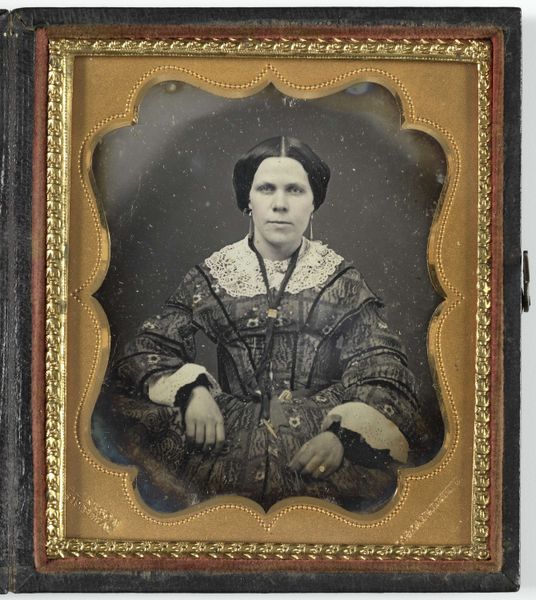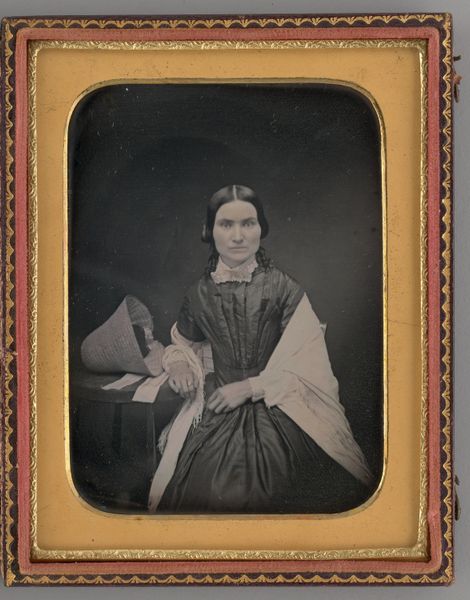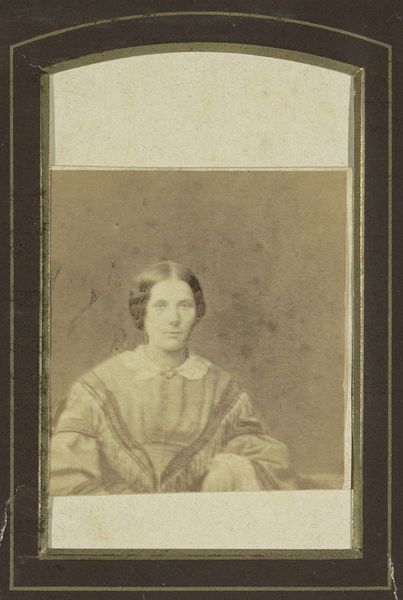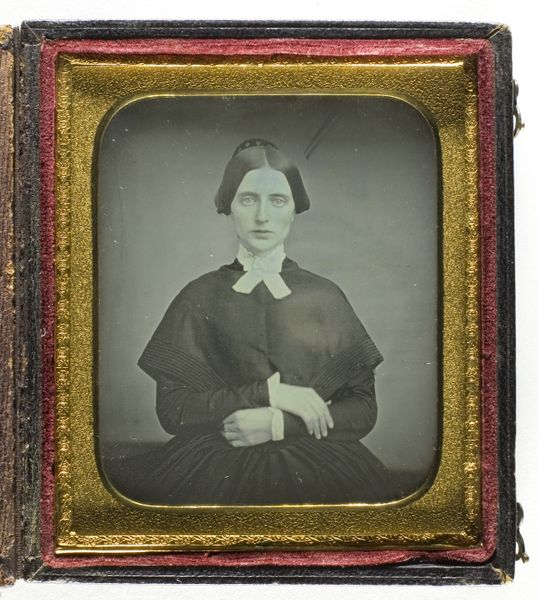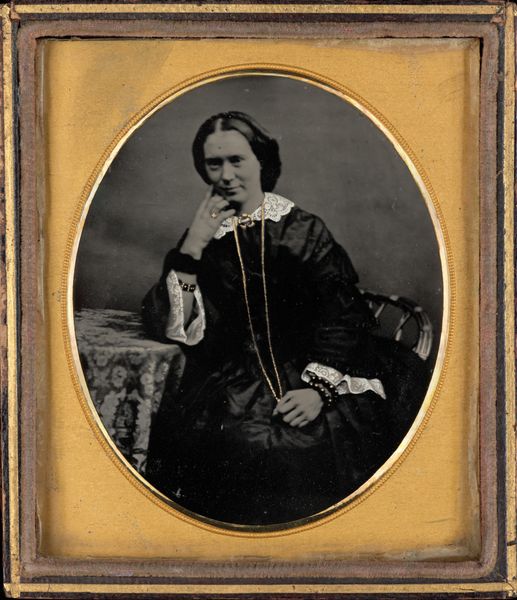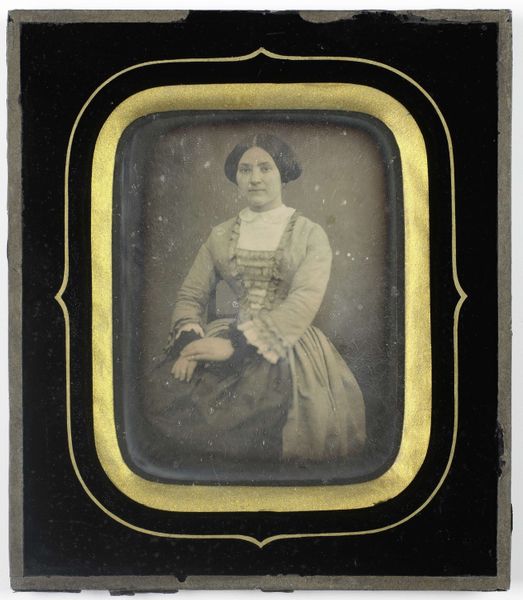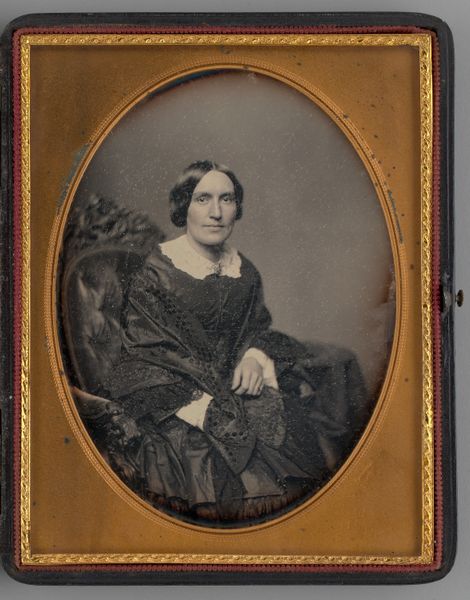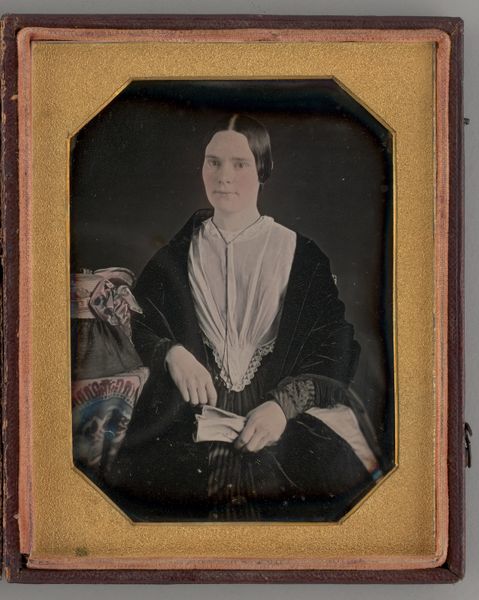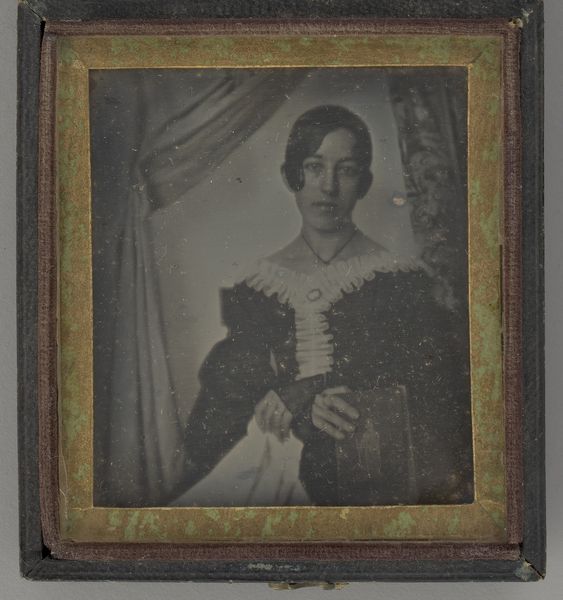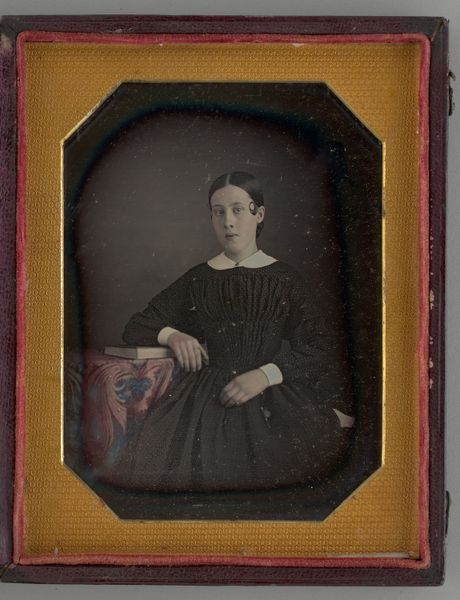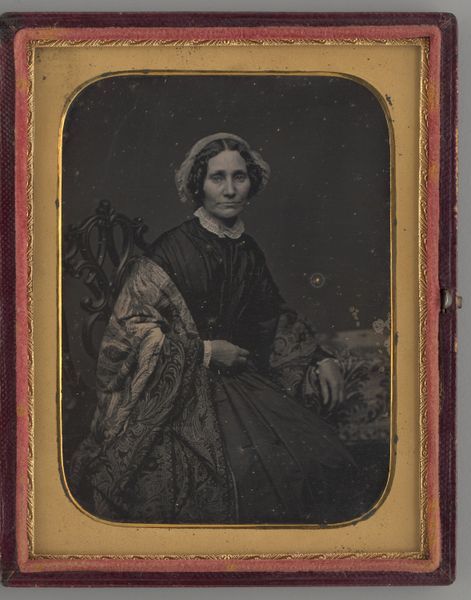
daguerreotype, photography
#
portrait
#
daguerreotype
#
photography
#
romanticism
#
watercolor
#
realism
Dimensions: height 65 mm, width 52 mm, height 93 mm, width 81 mm, thickness 13 mm
Copyright: Rijks Museum: Open Domain
Curator: This daguerreotype from 1843 captures Harriet Frances Rowan. Think about the historical implications—a portrait offering insight into the representation of women and class in the mid-19th century. Editor: It's strikingly somber, isn't it? The subdued palette focuses my attention entirely on her face. The almost palpable stillness is only amplified by the rigid formality of the octagonal frame, giving this a kind of contained austerity. Curator: Absolutely. Consider that women like Harriet existed within very tight social strictures during this time. It affected self-presentation, even photographic ones, contributing to an overall aesthetic of containment that extended to many other areas of existence. The gaze that returns to meet ours feels almost defiant, and that should be accounted for within this formal construction. Editor: I agree that the stillness adds a great deal to the impression, and there's so little background information. The background seems purposefully dark so that it focuses attention back to her and what can be interpreted in her expressions. What are we to think about the subject's clothing choices, the particular pattern and adornments visible within such a carefully structured work? Curator: Notice the plaid design of her dress and its likely connections to specific ancestral Scottish tartans—this tells us so much about her social identity, ancestral roots, and the narrative she likely constructed around that to claim status and solidify alliances during a time of massive political instability in Europe and beyond. Editor: The way light reflects on the metallic surface creates its own atmospheric haze, somewhat blurring the subject which draws me back again to formal and even textural relationships as part of the image's construction of meaning, an index pointing inward as well as outwards... Curator: Indeed. The photograph and sitter both, reflecting constraints that at once define them and offer an armature against which resistance takes shape. The choices she makes about self-representation—how the plaid sits on her shoulders, or even the glint of jewelry—push at boundaries of visibility within the limited space allowed her. Editor: So the image functions, both for us as viewers, and probably for the subject at the time of construction, on various semiotic registers, the material existence meeting the constructed narratives of self. Curator: It reminds us of the ever-present power relations at play when trying to capture something as seemingly simple as a portrait. It encourages questioning around how much agency sitters actually possessed within such productions. Editor: Looking closely offers layers of complexity. I will always be impressed by the simplicity and directness here, even as so much background contextual information reveals more depth and resonance in the artwork overall.
Comments
No comments
Be the first to comment and join the conversation on the ultimate creative platform.

